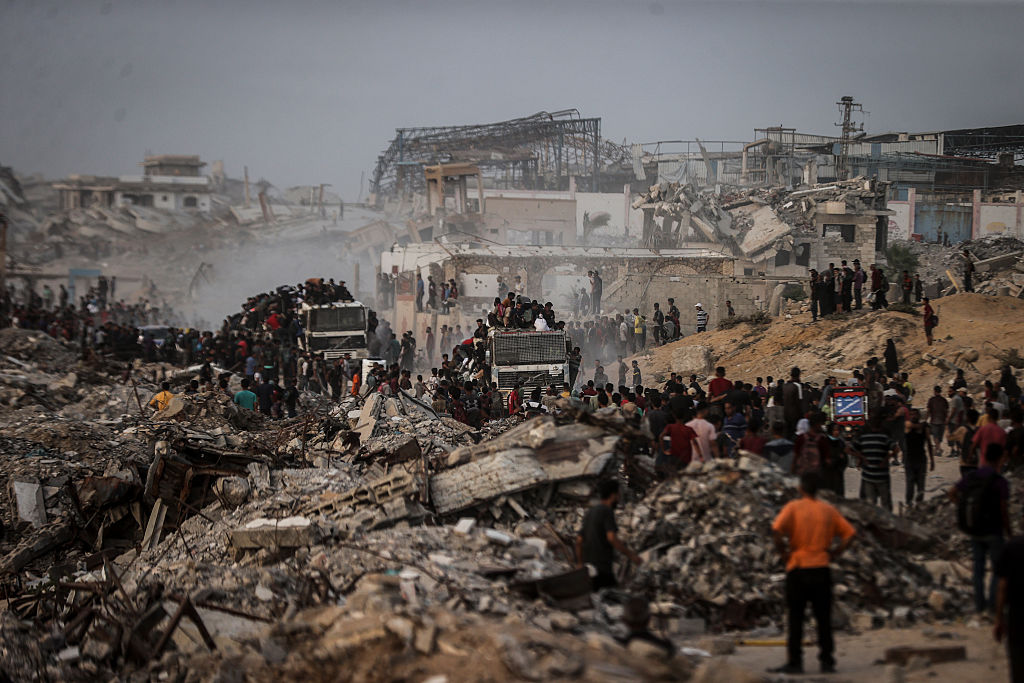President Donald Trump’s special envoy for the Middle East, Steve Witkoff, arrived in the Gaza Strip on Friday to visit aid distribution sites amid a worsening famine that has drawn international outrage in recent months.
White House press secretary Karoline Leavitt said Witkoff and Mike Huckabee, the American Ambassador to Israel, will brief the president after touring Gaza to help finalize “a final plan for food and aid distribution into the region.”
Witkoff visited at least one hub run by the controversial Gaza Humanitarian Foundation (GHF), an Israeli‑backed group staffed by American security contractors that has been distributing aid since May. In the months since, the Israeli military has killed more than 1,000 Palestinians who were gathered at aid distribution sites operated by the GHF. IDF soldiers told Israeli newspaper Haaretz in June that they’ve been ordered to open fire on civilians gathering at the sites.
“Today, we spent over five hours inside Gaza … The purpose of the visit was to give POTUS a clear understanding of the humanitarian situation and help craft a plan to deliver food and medical aid to the people of Gaza,” Witkoff wrote on X on Friday afternoon.
At @POTUS’s direction, @USAmbIsrael and I met yesterday with Israeli officials to discuss the humanitarian situation in Gaza. Today, we spent over five hours inside Gaza — level setting the facts on the ground, assessing conditions, and meeting with @GHFUpdates and other… pic.twitter.com/aCtLuMuhq1
— Special Envoy Steve Witkoff (@SEPeaceMissions) August 1, 2025
After the envoy left, Palestinians told CNN that Israel shot at them near the same site that Witkoff had visited.
Reactions to Witkoff’s visit were sharply divided. Some Gazans expressed hope it might spur action toward a ceasefire. “It’s now clear to everyone that Gaza is no longer livable,” Hatem Abu Rahma told CNN, urging the envoy to “intensify efforts to end the war and relieve the suffering.” Others dismissed the trip as political theater. “This is a naive visit… an insult to all the reports about famine in Gaza,” Raed Radwan said to CNN, describing aid distribution as “putting food for the animals in a cage.”
International aid groups say the crisis has reached a “worst‑case scenario of famine.” While Israel has paused fighting in parts of Gaza and allowed more trucks in the figure remains far below what the UN says is needed, and most trucks never reach UN warehouses, according to the Associated Press. Airdrops continue but deliver only a fraction of needed supplies, and some packages land in evacuated or inaccessible zones, or in the sea.
Aid workers warn that recent Israeli changes will not make a meaningful difference. “These are theatrics, token gestures dressed up as progress,” Bushra Khalidi of Oxfam told the AP. “A handful of trucks, a few hours of tactical pauses and raining energy bars from the sky is not going to fix irreversible harm done to an entire generation of children that have been starved and malnourished for months now.”


